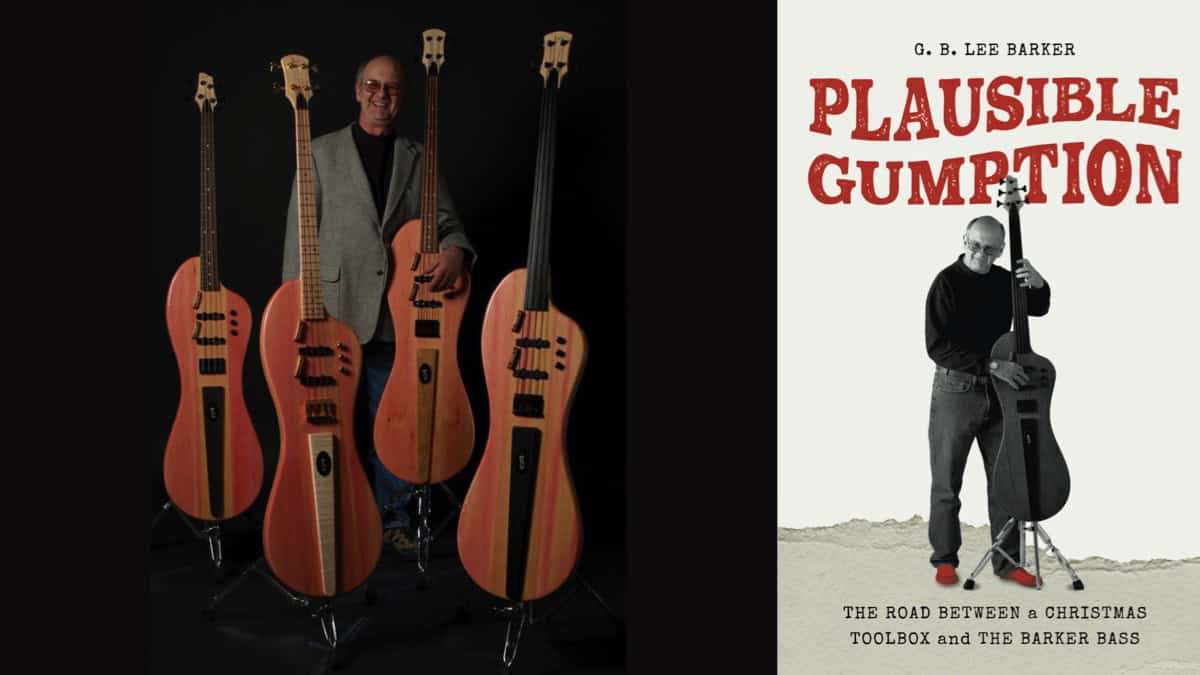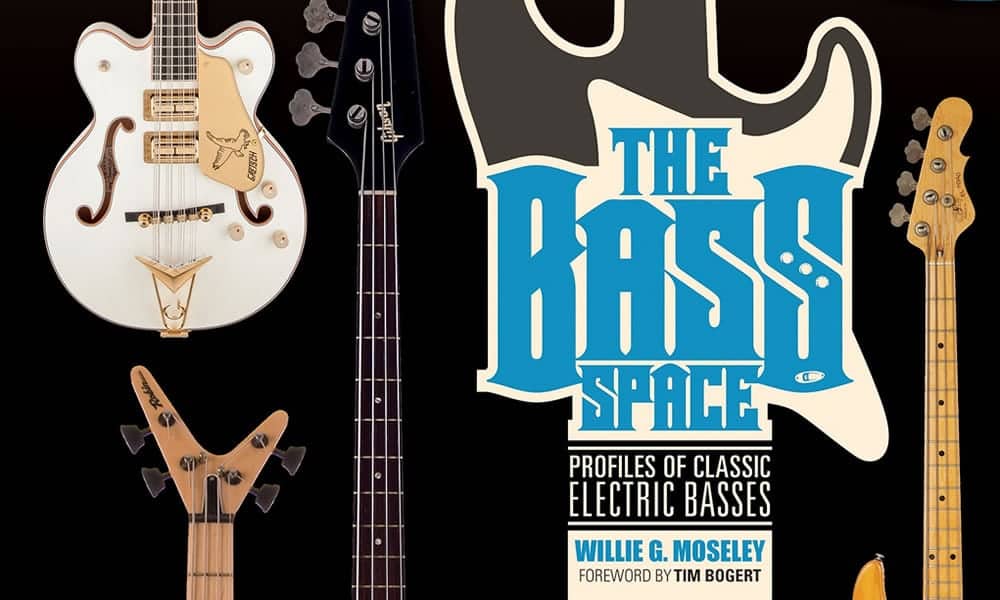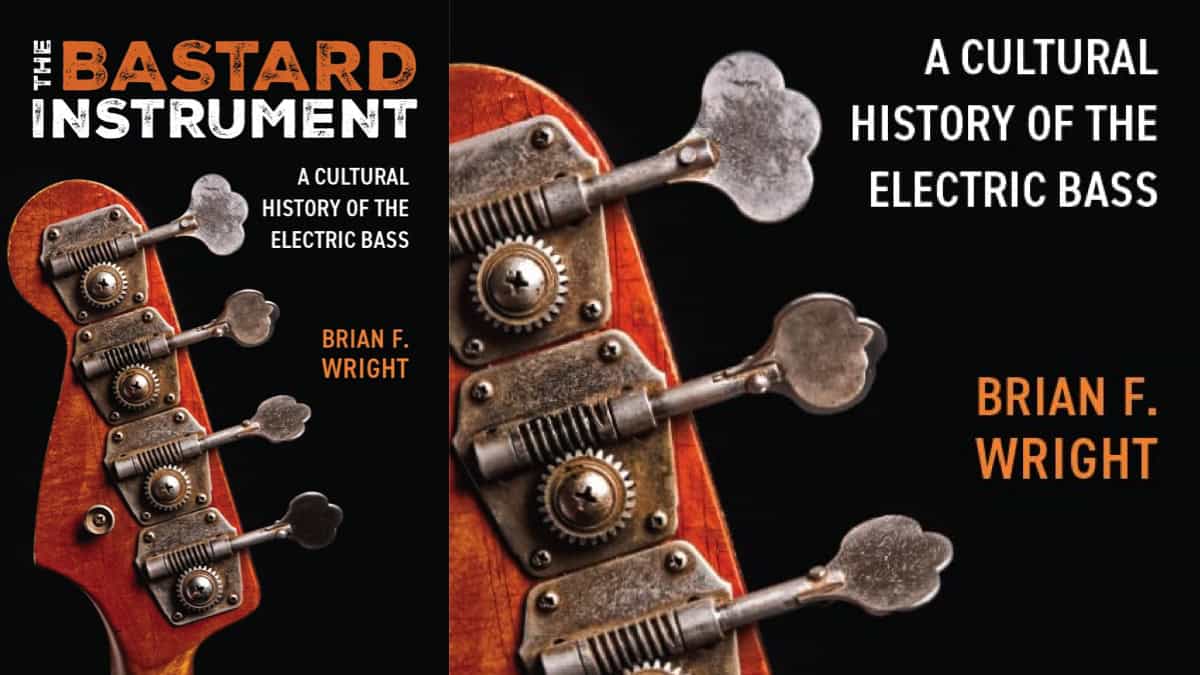Bass Books
Bass Gym – 101 Chords & Harmonic Accompaniments

Bass Gym – 101 Chords & Harmonic Accompaniments…
We all know that the bass guitar is primarily a melodic and rhythmic instrument. We can
play fat huge bass notes on it with any finger technique, slapping, picking or tapping. In
most cases, however, we will play single notes that build on each other to form a bass line.
The guitarist or keyboardist is in charge of playing the chords, right? So there’s no point in
playing chords on the bass, because we’ll just be wasting our time.
Wrong! Playing chords gives us a tremendous amount of insight. We learn to hear and also ‘see’ chords. In many cases we will have to adjust our fingering and voicing (the way the chords can be interpreted).
On the bass, we very often play double stops (two notes at once) and power chords (either as a double stops with a root and a fifth or as a triple stops with a root, a fifth and an octave). These are the simplest chords that we can incorporate into our bass lines right away.
For example, Lemmy Kilmister was a master at playing power chords! And the likes of Stanley Clarke, Marcus Miller, Victor Wooten and Justin Chancellor of Tool have many grooves or riffs built around playing double or triple stops.
Purely from the point of view of music theory, a chord is a chord if it consists of at least three notes – a root, a fifth and a third. It is a constellation of the simplest major and minor chords. If we proceed further in the chord hierarchy, all chords with a number seven in their name consist of four notes (the three notes mentioned above plus a major or minor seventh), ninth chords of five notes (we add the so-called ninth note, which is a second played an octave higher), eleventh chords of six notes, and finally thirteenth chords of seven notes. So suddenly you realise that you are actually using all the notes of a scale that consists of exactly seven notes (not including the octave).
Yes, the composition of chords and their whole system is closely related to intervals and scales. It is such a great building block for any playful musician.
So, let’s summarize why it’s good to master playing chords on the bass:
1) Understanding the connection between intervals, scales, and chords
2) Improving the visualization of the fingerboard
3) Expanding the register with new techniques for playing
4) Challenging left hand finger coordination
5) Understanding chord formation and note hierarchy aka voicing
6) Insight into the mindset of guitarists or pianists
7) Understanding the harmonic aspects and structure of a given piece of music
As in all the books in the Bass Gym 101 series, we have a total of 101 exercises
targeting all important aspects of the topic. In our case, chord playing and harmonic
accompaniments. Each exercise is briefly described in the title and consists of a notation and tablature that shows you where and how best to play the exercise.
I recommend being particularly consistent in the way you play the exercises. Begin with small sections – one bar at a time, slowing down and looping. Gradually add more bars and also increase the tempo.
I was especially careful to write each exercise in a practical, musical way. These are not just boring etudes or purely mechanical practice. You can take the exercises and use them straightway in a song or jam session with a drummer or other musician. Or use them in your own original composition. There are no limits to your imagination and creativity.
The main focus is on musicality, challenging progressions, fingerings and combinations which will enhace your playing skills while keeping it real and practical. Often exercises are written as passages in songs – a verse, a bridge or a chorus.
I hope this musical approach will motivate you even more to incorporate chordal playing into your bass lines. Personally, I always immediately think of a new song when playing chords and often end up playing it with the band. You never know, maybe chord playing will inspire you enough to become a songwriter and bring not just grooves or bass lines to the table, but also complete songs and arrangements.
Exercise methodology:
1-10 – practicing double stops
11-20 – practicing double stops and open strings
21-29 – tenth chords
30-39 – chords with three notes – triple stops
40-49 – grooves with double stops and chords
50-60 – seventh chords
61-65 – ninth chords
66-70 – sus4 chords
71-75 – chords using all four strings
76-80 – flamenco style chords
81-90 – voice leading
91-101 – etudes and grooves in different musical styles
Bass Gym – 101 Chords & Harmonic Accompaniments is available online at Amazon.com
All exercises are available as mp3 downloads at basslinepublishing.com/free-stuff
Bass Books
Interview With Barker Bass’s Inventor and Writer Lee Barker

If you are an electric bass player, this is an exciting time to be alive as this relatively new instrument evolves around us. Some creative individuals have taken an active role in this evolution and made giant leaps in their own direction. Lee Barker is one of these inventive people having created the Barker Bass.
Fortunately, Lee is also an excellent writer (among so many talents) and has recently released his book “Plausible Gumption, The Road Between a Christmas Toolbox and The Barker Bass”. This book is a very fun read for everyone and shares a ton of details about Lee’s life in general, his experiences as a musician, a radio host, and a luthier. Now I am fortunate to have the great opportunity to gain even more insights into this renaissance man with this video interview.
Plausible Gumption, The Road Between a Christmas Toolbox and The Barker Bass is available online at Amazon.com
Bass Books
Ultimate Look at Electric Basses from 1930 to Today

The Bass Space: Profiles of Classic Electric Basses.
The definitive book for lovers of the low-end. Willie G. Moseley, Senior Writer for Vintage Guitar Magazine, profiles more than 100 historic and unique electric bass models from such makers as Alembic, Danelectro, Fender, Gibson, Gretsch, Guild, Hamer, Kramer, Rickenbacker, and many others.
Rare and legendary instruments, from the earliest attempts at amplified basses in the mid-1930s to the cutting-edge instruments of today, are presented in more than 250 color and period photos.
The main feature of this book is the exclusive coverage of historic and one-of-a-kind basses owned and played by such famed musicians as: Bill Black (Elvis Presley), Tim Bogert (Vanilla Fudge), Mark Egan (Pat Metheny Group), John Entwistle (The Who), Paul Goddard (Atlanta Rhythm Section), Bruce Hall (REO Speedwagon), Greg Lake (Emerson, Lake & Palmer), Benjamin Orr (The Cars), Tom Petersson (Cheap Trick), Carl Radle (Derek and the Dominos), Gene Simmons (Kiss), Steve Wariner, and others.
The Bass Space: Profiles of Classic Electric Basses is available online at Amazon.com
Bass Books
Review: The Bastard Instrument, A Cultural History of the Electric Bass by Brian F Wright

I was intrigued when The Bastard Instrument showed up on my desk… let’s dig in!
When we dive into the history of our beloved instrument, the bass, we find roots that go back as far as the 15th century. This instrument was a member of the violin family and was for the longest time, an acoustic instrument. As the years passed and music changed, there was a need for the instrument to evolve and the electric bass was born.
Comparatively, the electric bass is a relatively new instrument with its earliest appearances dating back to the 1930s and it is exciting to be an electric bass player while this history unfolds around us. Fortunately for us and future generations to come, Professor Brian F. Wright has taken on the herculean task of documenting the trajectory of the electric bass with this excellent book.
The Bastard Instrument presents an extraordinary amount of fine details about the instrument itself, the development of the amplification to handle its output, the pioneers that dared play it, the rapidly evolving music that flourished because of its presence and so much more.
When I first started reading this book, I noticed that it felt a tad academic, like a textbook (it might be one someday) or a doctoral thesis, but to present all this information accurately, this approach is more than appropriate. Another detail that might be a bit of a spoiler is that the book only gets us up to the late ’60s. I was left wanting more as we know that so much has happened in the bass world since that time frame; I hope there is another volume in the works to get us up to the present!
All in all, “The Bastard Instrument, A Cultural History of the Electric Bass” is a must-read for all of us who play electric bass and understand its essential place in music.
I found that there was a lot that I already knew but also quite a bit that I was unaware of. I believe that to know and understand where you are, you must know the history of exactly how you got here.
Highly recommended.
The Bastard Instrument is available at Amazon.com (beginning July 2024)
Bass Books
Review: The Bassist’s Complete Guide to Injury Management, Prevention and Better Health

The Bassist’s Complete Guide to Injury Management, Prevention and Better Health
I have often thought that it would be great if the doctors who delivered us as newborn babies provided us with a user manual to help us navigate through life in the best way possible. Now Dr. Randall Kertz, D.C. has produced a manual specifically designed to address the many possible afflictions plaguing us bass players.
Many of you will remember volumes 1 & 2 of this book and our first review in 2007. The new complete guide combines the two volumes and features over 20 pages of new material including interviews, techniques, and conditions.
If you play bass, you can read this book cover to cover and walk away with a ton of relevant and helpful knowledge. Another option is to search out issues relevant to you specifically (I found quite a few of my own with helpful options). This is possible because the book is very nicely organized into six chapters that address Pain, Conditions, Techniques, Road Issues, Inspirational Q&A with some of the biggest names in the bass community (too many to list here) and finally How to get relief.
All said, this book is essential if you play either electric or upright bass to the point where they should issue you one when you get that first bass in your hands.
Lastly, if you have this book and you have specific questions, Dr. Kertz is readily available through his website, www.drkertz.com. As if that was not enough, he has a wealth of knowledge you can find right here on our website at bassmusicianmagazine.com/author/randallkertz
Get this book… Live long and play bass well into the years! Available on Amazon.com
Bass Books
The Bassist’s Complete Guide to Injury Management, Prevention & Better Health

The Bassist’s Complete Guide to Injury Management, Prevention & Better Health is now available!

A compilation of Volumes 1 & 2 of the acclaimed Bassist’s Guide with 20+ pages of new interviews, techniques, and conditions, The Complete Guide puts everything in one convenient place.
Available at Amazon.com and from our friends at Bassline Publishing
Follow Dr. Kertz’s Bass Player Health at Bass Musician Magazine



















